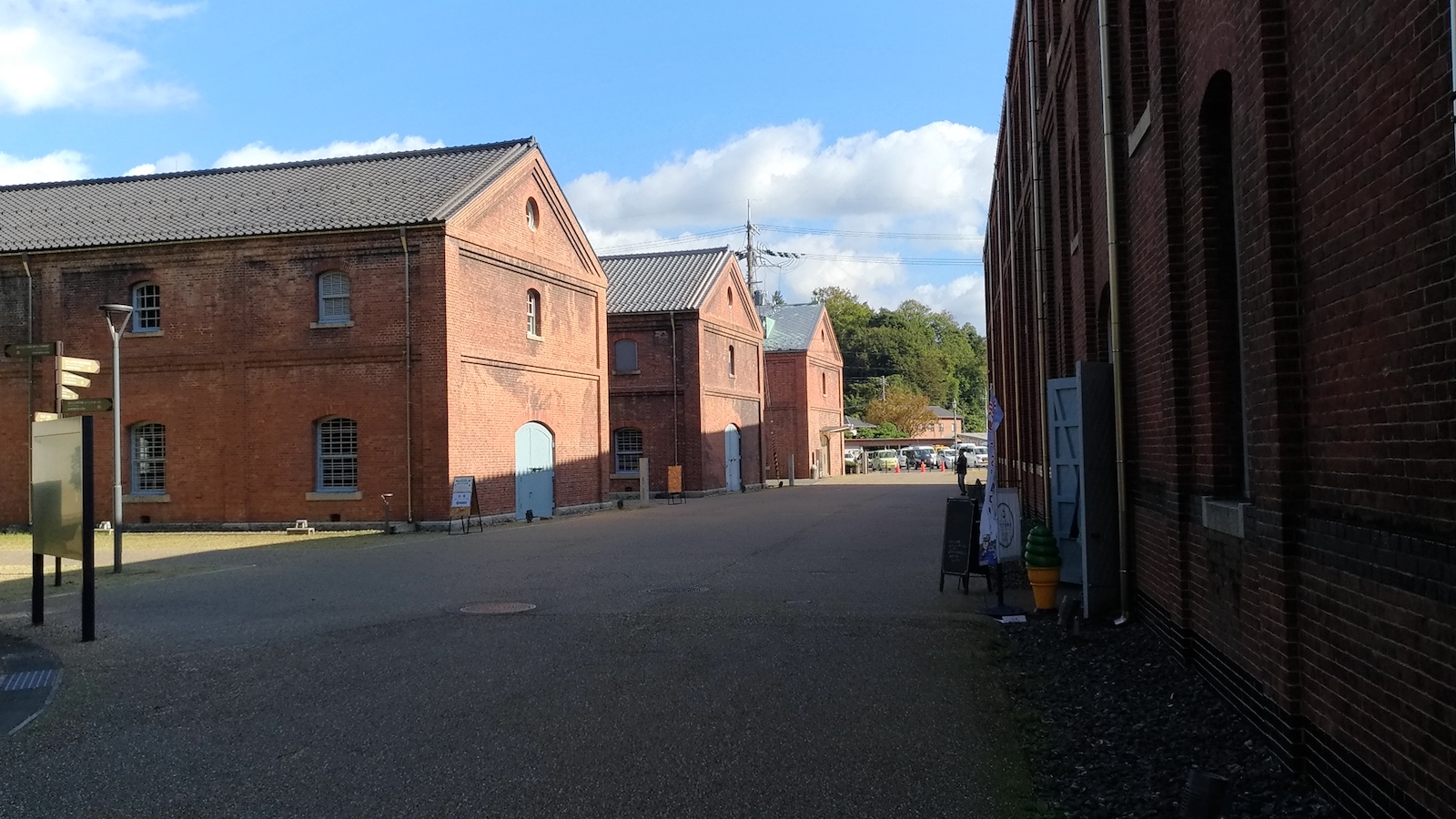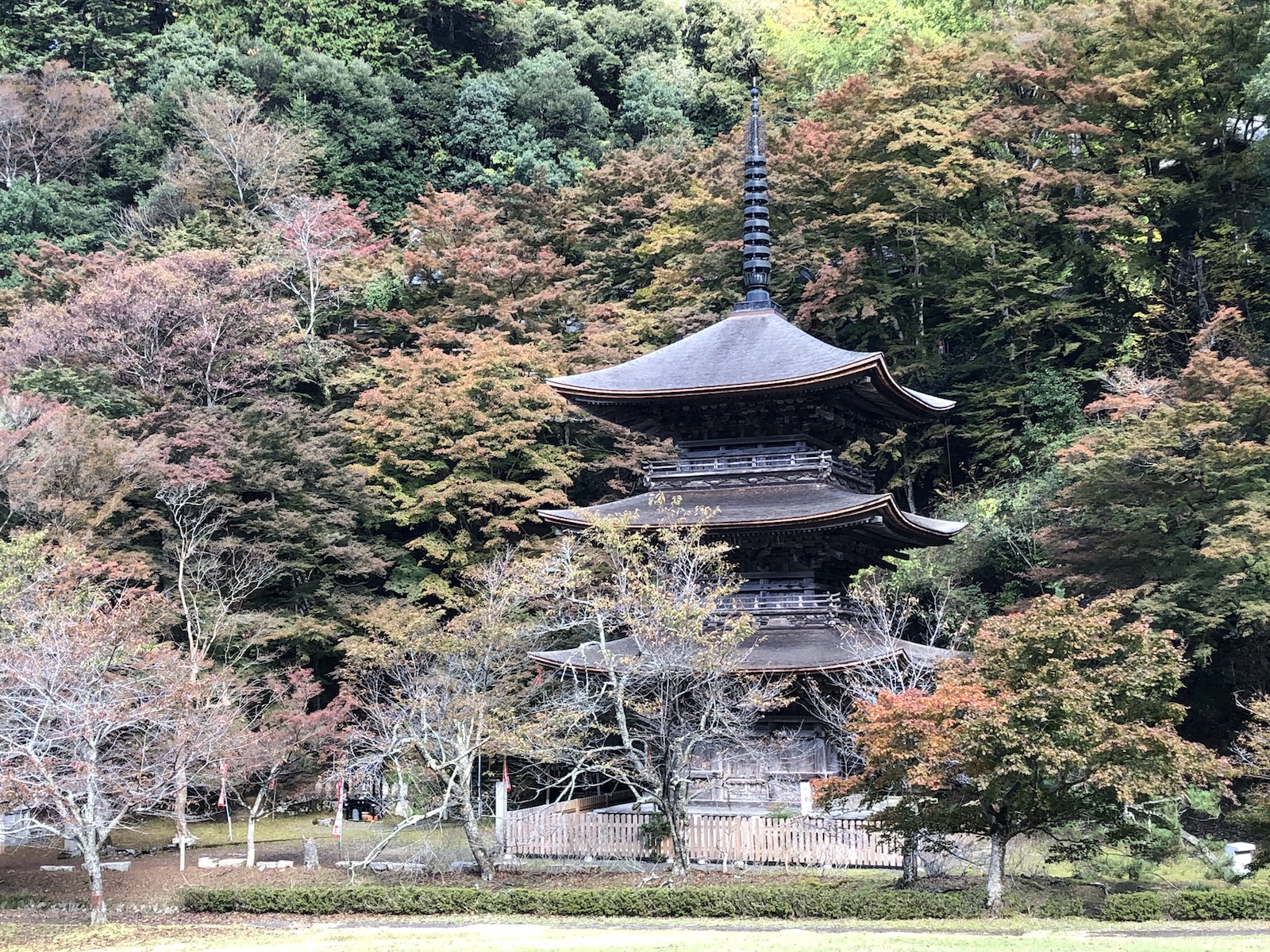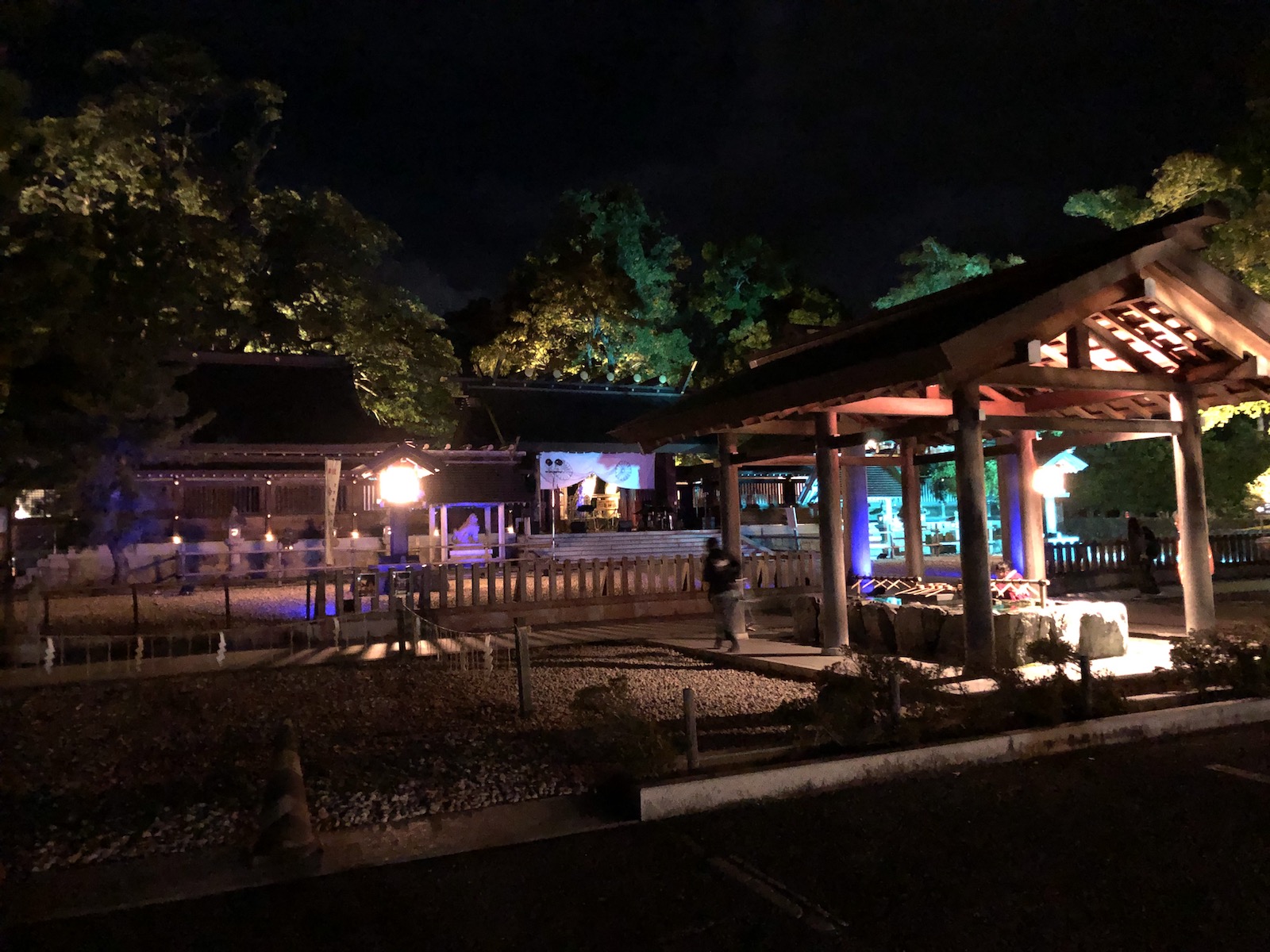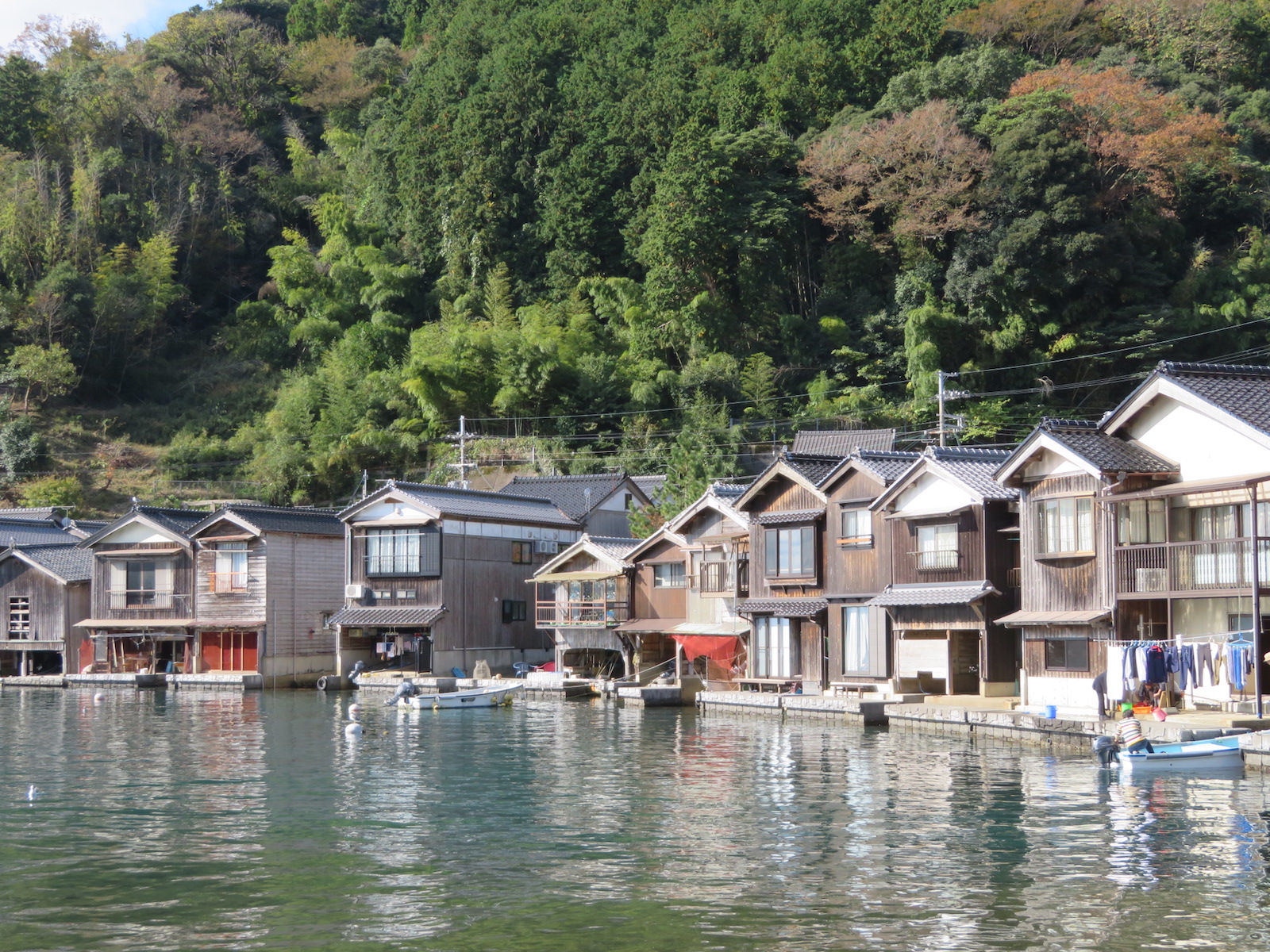Kyoto is one of Japan’s most popular tourist destinations. Yet 95% of Kyoto’s tourists visit only the city, leaving the rest of Kyoto Prefecture unexplored.
One hundred kilometers north of the city of Kyoto -- about an hour and a half by express train -- lies another Kyoto, the Japan Sea coastal region of Kyoto Prefecture. For centuries this region has served as the city’s supplier of food, drink and traditional goods such as cloth and paper. At the same time, the area has beautiful scenery -- it is home to one of Japan’s top three scenic spots -- historical temples and intriguing 20th century history.
Maizuru
The city of Maizuru sits on a deep bay that made it a perfect choice to become a base for the nascent Japanese navy at the end of the 19th century. Ships were constructed and repaired at the Maizuru Base during both the Russo-Japanese War (1904-1905) and Japan’s subsequent colonization of Manchuria and other parts of Asia culminating in Japan’s defeat in 1945.

A number of quayside red brick warehouses dating back more than a century have been preserved as Maizuru Brick Park. Just wandering among the warehouses provides an interesting timeslip; step inside to find a helpful visitor center and historical displays as well as shops and cafes.
From April to November, there are also boat tours of the harbor from a boat landing on the waterfront.
Nearby, another historic red brick building, built in 1903 for use by the Navy to store torpedoes, now houses the Maizuru World Brick Museum. Open daily 9:00-17:00 (closed Dec 29-Jan 1); admission: 300 yen.

The first floor of the museum contains a life sized replica of a Hoffmann kiln, the type of kiln commonly used to produce bricks after the middle of the 19th century. Visitors will also find examples of bricks from historical sites around the world. There are bricks from ancient Egypt and Mesopotamia, Pompeii, Hadrian's Wall, the Great Wall of China, Hampton Court, and many more. The various sizes and colors of the bricks are astonishing.
On the second floor are exhibits on historical and present-day uses of brick in Japan. There are scale models of such famous brick buildings as the 1914 Tokyo Station. One particularly interesting exhibit features “bricks which witnessed history”, including bricks from German concentration camps and even from the Hiroshima Prefectural Industrial Promotion Hall that was partially destroyed by the first atomic weapon ever used.

At the end of World War II, as many as three-quarters of a million Japanese soldiers were interned by the Soviet Union in forced labor camps. Many died in the extreme conditions. Between 1946 and 1950, around 450,000 were repatriated, predominately through the port at Maizuru. Visitors can learn more about the conditions at the labor camps and the repatriation process at the Repatriation Memorial Museum on a hill overlooking Maizuru Bay. Open daily 9:00-17:00 (closed 3rd Thursday each month and Dec 29-Jan 1); admission: 300 yen.

Before becoming a naval center, Maizuru was a sleepy fishing village, its history stretching back more than a thousand years. Up a small valley just to the east is Kongo-in, a temple founded in the 9th century. The temple’s three-tiered pagoda sits picturesquely against the hillside, with its historical hall situated above it, at the top of a long flight of stairs. Open daily 9:00-16:00; admission: 300 yen.

Miyazu
Miyazu is famous for its coastal scenery as well as its mythical connections to Izanagi-no-mikoto, one of the Shinto deities said to have created the islands of Japan. According to legend, Amanohashidate, a three-kilometer wooded sandbar regarded as one of Japan's top three scenic spots, is a pathway to the heavens.
Visitors can walk or ride rented bicycles the length of Amanohashidate, stopping along the way to visit the various shrines and tea houses nestled in its pine trees. A sightseeing boat also carries visitors from one end to the other (600 yen). Chairlifts and ropeways operate at either end, to carry visitors upward for a more panoramic view (660-800 yen).

At the south end of Amanohashidate sits Chionji temple. Founded in the 9th century, this is one of three temples to house statues of Monju Bosatsu, the Buddhist god of wisdom. Among the interesting features of the temple are its fan-shaped omikuji fortunes, which visitors often tie to pine trees on the temple grounds, and the water basin for pre-worship ablutions, a 13th century iron tub formerly used by the monks for their regular baths.

At the north end of the sandbar is Motoise Kono Shrine, a shrine affiliated with the goddess of agriculture and said to predate Ise Grand Shrine, with which it now maintains a close affiliation.
Above the shrine, accessible by chairlift or ropeway, Kasamatsu Park is a great place to enjoy the view. A shuttle bus from the park carries visitors to Nariaiji temple, a popular temple with Buddhist pilgrims since the 12th century.

The temple's pagoda was rebuilt in 1998 according to the original 13th century plans and is now a central focal point for the temple. Further up the mountain is the 18th century main hall of the temple, which houses the Kannon statue that is the object of worship for pilgrims.
There is a curious practice associated with hillside views of Amanohashidate, which is to turn your back to the view and bend over to look at it upside down between your own legs. Called mata-nozoki, this view is said to reveal how Amanohashidate truly is a bridge to heaven.

Ine
The tiny fishing village of Ine, north of Miyazu, is quiet and picturesque. Most of the shoreline of its compact bay is lined with funaya boat houses. The bottom level of these houses opens directly to the water, to allow fishermen to pull or hoist their boats inside. Also accessible from the road on the inland side, funaya living quarters are on the upper levels. Some funaya have been converted into guest houses, providing comfortable accommodation with beautiful water views. And, if you open the window, you also get the soothing sound of lapping water.
While Ine is a great place to just chill out, wandering the streets and taking in the ambiance, don't miss the Ine Bay Boat Tour, a 30 minute ride around the bay which provides views of the boathouses. Departures daily every 30 minutes from 9:00 to 16:00; 800 yen.
Another interesting spot to check out is the Mukai Sake Brewery that also sits right on the waterfront. Among the sakes produced here is Ine Mankai, a pink-tinted sake made with an ancient strain of purple rice. The toji (master brewer) is Kuniko Mukai, who become one of Japan's first female toji in 1998 at the age of 22, carrying on a family business founded in the 18th century.
Maizuru and Miyazu are both easily accessed by train; reaching Ine requires a bus ride. Another easy option is to rent a car near Higashi Maizuru station and drive to the other destinations. This also maximizes opportunities to enjoy the scenic coastline.
Vicki L Beyer, a regular Japan Today contributor, is a freelance travel writer who also blogs about experiencing Japan. Follow her blog at jigsaw-japan.com.
© Japan Today Take our user survey and make your voice heard.
Take our user survey and make your voice heard.















4 Comments
Login to comment
Nobnaga
Kyoto always one of the best places that you need to visit its just charming and beautiful
inkochi
Yes, overlooked.
Actually has a freeway through the area - about 40 km shorter than the other way if you are going up Hokuriku.
Worth a few stops (and better seafood than in Kochi)
KariHaruka
Visited Amanohashidate a few years ago. It was a wonderful day trip from Kyoto. (and I remember there being a pass that could be used on the trains, as well as access to local transport such as the boats and cable cars)